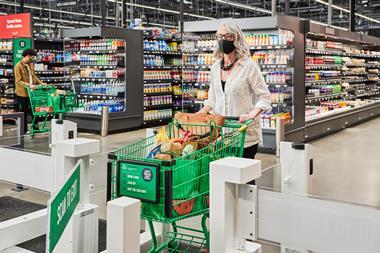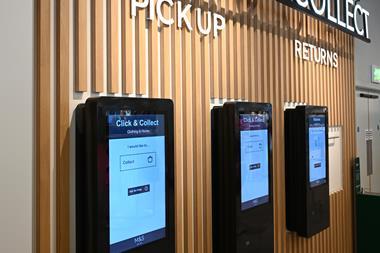The pandemic has forced retailers to embrace digital technology – and those that haven’t risk being left behind, says Greg Petro, CEO of First Insight.
The Covid-19 pandemic accelerated and magnified the digital transformation of every business profoundly and irrevocably. Some pre-pandemic ways of working may come back once we can safely gather together again, but many will go the way of the floppy disk.
According to McKinsey, Covid has pushed companies over the technology tipping point and transformed business forever. A new survey found that responses to the pandemic have sped up the adoption of digital technologies by several years – and many of these changes could be here for the long haul.
Retail is an industry that often relies on the old ways of working and the acceleration of digitalisation is an overdue disruption. The way people work has fundamentally changed and our bet is that the old ways retailers used to conduct line reviews will become a thing of the past.
Retail is an industry that often relies on the old ways of working and the acceleration of digitalisation is an overdue disruption
Merchants travelling the world to visit far-flung showrooms will become a relic of the pre-digitalised way of doing business. Digital line review capabilities have transformed a primarily intuitive or historical sales-driven exercise to one that utilises data, Voice of the Customer and pricing models to allow merchants to make better-performing decisions.
According to McKinsey, most B2B seller interactions have moved to remote or digital, and around 70-80% of B2B decision-makers prefer remote human interactions or digital self-service due to ease of scheduling, savings on travel expenses and safety. Showroom visits, which require teams to be away from the office for days, are another opportunity for disruption.
Retail goes digital
Digital showrooms, also known as virtual showrooms, are an innovative solution that lets brands and retail buyers engage and sell products through an online platform. Virtual showroom platforms such as Joor, NuOrder and BrandLab360 have been around for several years, and their growth has exploded due to the global pandemic.
Digital line review platforms effectively resolve the issues created by the pandemic that forced retailers and brands to review collections or products virtually. The retail industry is a social, relationship-driven business that suffered from increased remote work.
Digital line review platforms effectively resolve the issues created by the pandemic that forced retailers and brands to review collections or products virtually
As rue21’s former chief analytics officer Mark Chrystal notes: “The pandemic made line reviews and product selection extremely difficult for our merchants. Leveraging digital line review capabilities changed everything. We expanded our digital testing and increased how heavily we were weighting the voice of the customer in our decision-making.”
The introduction of virtual digital line reviews brings together in-the-moment predictive performance data and customer feedback to arm retail teams with the right information to make decisions that will positively impact sell-through and bottom-line results.
Real-time insights
Large internal groups now have access to tools that streamline and aggregate data when teams can’t be together physically. Real-time data insights inform design and planning teams on selecting products with confidence, backed by predictive consumer data, leading to win-win decisions for increased revenues and margins.
Many retailers and brands are never going back to the old way
Voice-of-the-customer predictive analytics provide data and input to better forecast average selling prices and identify opportunities to optimise pricing to maximise margin dollars. In today’s environment you can’t just adjust your line review process – you need to overhaul and improve it. Many retailers and brands report that they are never going back to the old way.
Anticipate outcomes
Companies relying on instinct, sales history or even hope will lose out to retailers leveraging digitalisation, predictive analytics and the voice of the customer.
Digital transformation tools allow retailers and brands to anticipate outcomes through a combination of technology, advanced analytics, mathematical models, and predictive analytics. Integrating technology increases efficiency, creating easier ways to work smarter, which lead to positive effects on the bottom line.
Integrating technology increases efficiency, creating easier ways to work smarter, which lead to positive effects on the bottom line
Customer-driven data insights allow brands and retailers to understand which products will succeed and which will fail. Digitalisation and new technology tools help merchants to optimise product assortments and retail pricing, as well as understand the depth to which they should stock any particular item.
To learn more about digital transformation maturity and how your team can utilise digitalisation to revolutionise your buying process from a reactive to a proactive one, please visit www.firstinsight.com.
Greg Petro is CEO of First Insight

Greg Petro, CEO and founder of First Insight, has extensive experience in product development, marketing, finance and leadership within both the retail and technology industries.
His expertise and dedication have been recognised in publications, on TV and at events that include The Wall Street Journal, Fortune, Forbes, Financial Times, CNBC, Bloomberg and NRF’s Big Show.
Petro is an international keynote speaker and has written for Forbes for more than six years, where he shares his weekly perspectives to the investment community.






























